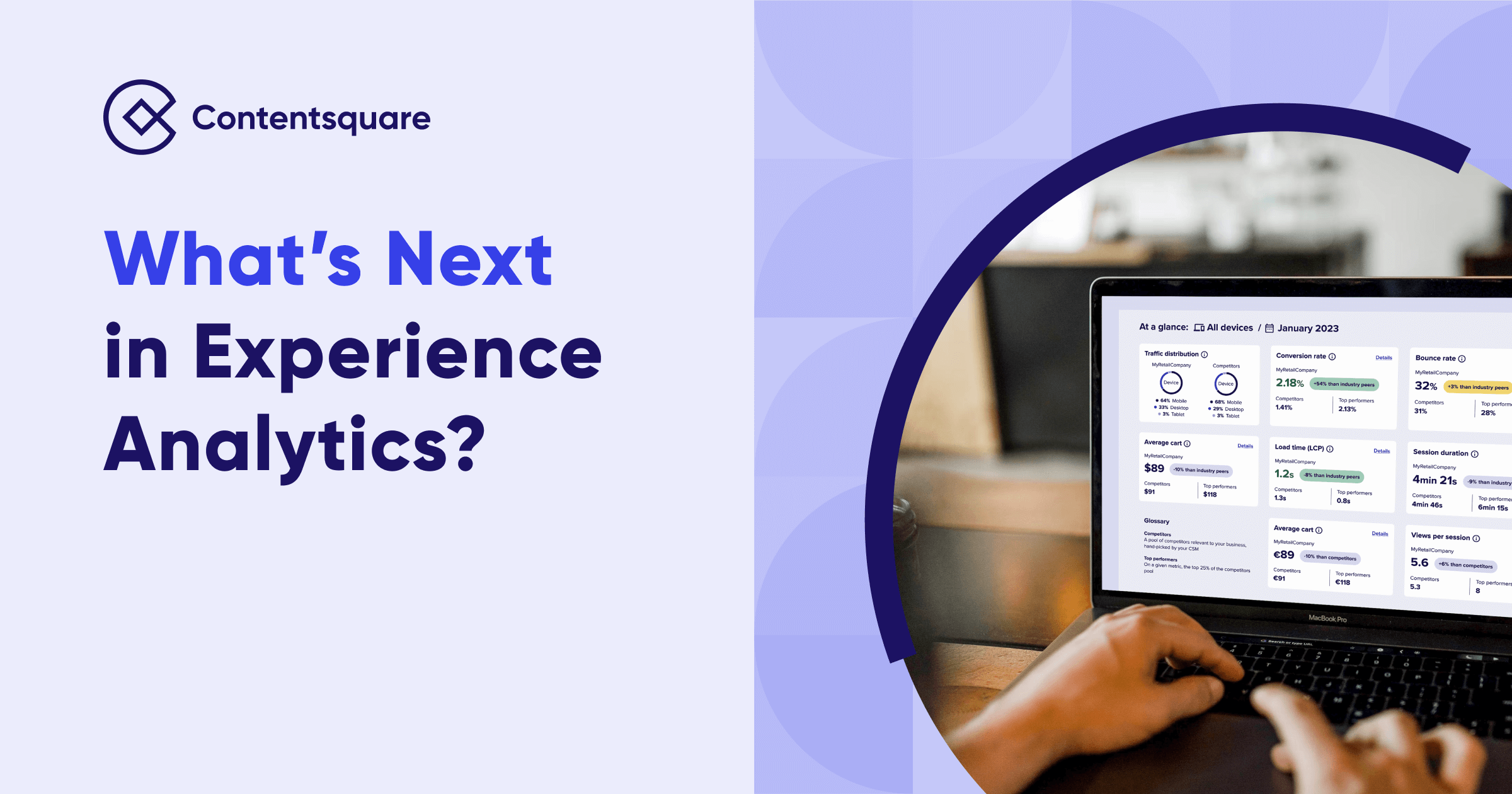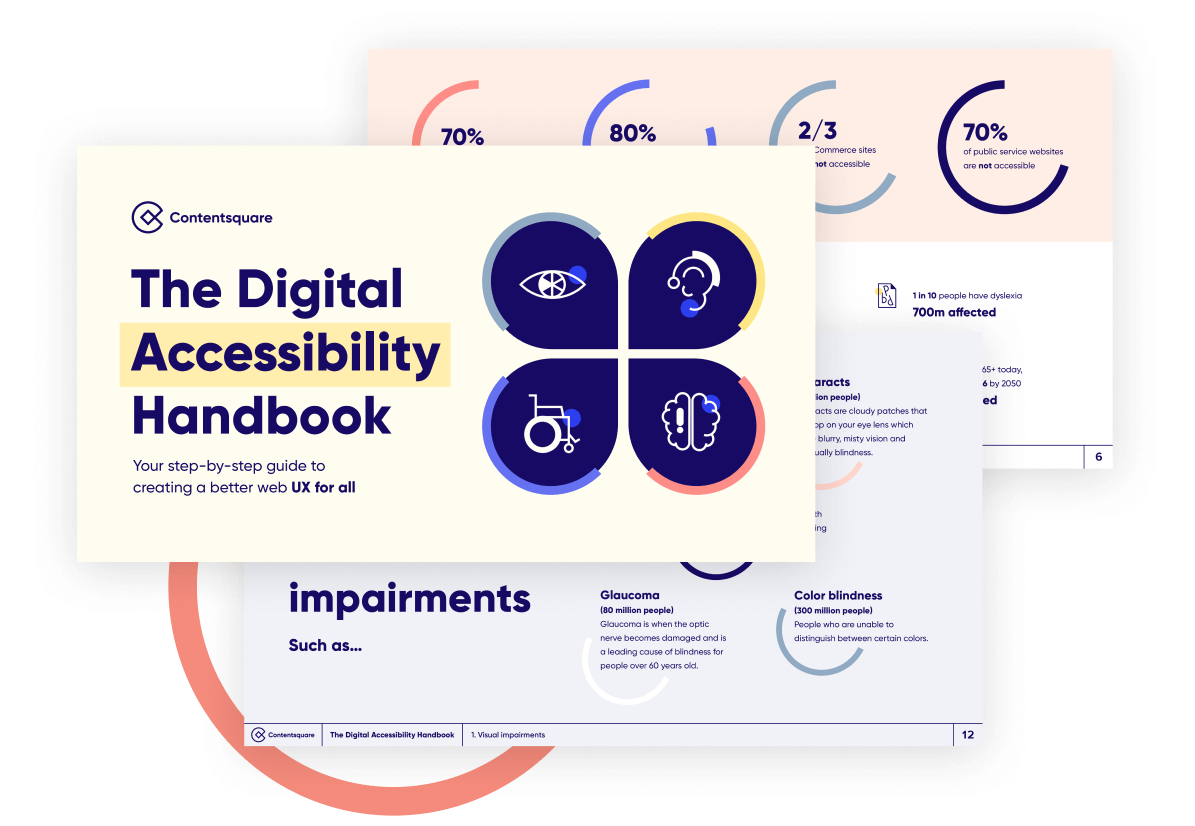
Get the Digital Accessibility Handbook
Download our handy guide to creating better user experiences for all.

Grab is a superapp based in Southeast Asia which provides everyday services like deliveries, mobility, and financial services in markets such as Singapore, Vietnam, Cambodia, and Myanmar. GrabFood, a subservice of Grab, is a food delivery service connecting local food businesses to people. As well as catering to their own users, Jay’s team also had to consider different government regulations, socioeconomic statuses, and laws in each country to ensure their offering was accessible to all.
Get the Digital Accessibility Handbook Download our handy guide to creating better user experiences for all.
Having worked in Southeast Asia for a number of years now, here’s what he had to say about designing for this part of the world.
“There is a digital divide between countries”, Jay begins. Most people are unaware that the majority of the market share in Southeast Asia uses Android phones, contrasting with the IOS experience in the West. So they need to ensure their designs are optimized for old Android phones to give their users the most comfortable experience on the app.

Instacart, an American eCommerce app
A clean-cut design works on platforms such as the American app Instacart with an emphasis on promotional items. The discounts are displayed via colors and words to attract and entice users.
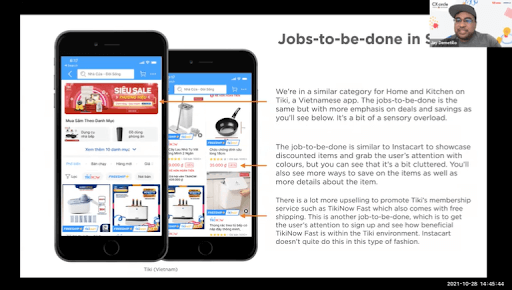
Tiki, a Vietnamese e-commerce app
In contrast, the Vietnamese app Tiki uses colors and lots of information to drive customer purchases. This brings back the point of inclusive UX design; unpacking biases and assumptions to understand that a clean design will not work for every market.
Jay and his team needed to understand how their customers in each country were ordering meals in their day-to-day lives. They talked to locals who had never used food apps before and observed how they ordered food and interacted with waiters.
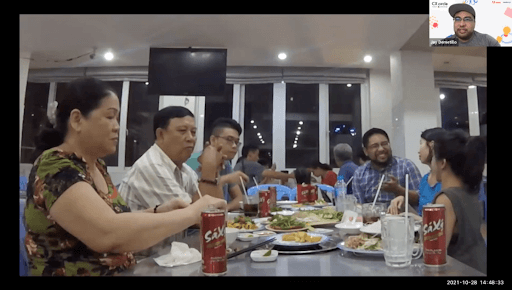
In most Southeast Asian countries, locals would often ask for waiters’ recommendations and photos of the food, which affected their purchase decisions. Jay’s team prioritized these elements into their product, such as recommending complimentary food items and having photos next to the name of the food items.

In 2017, GrabFood was “a mess”, says Jay, with little to no localization of each country’s culture in the app. After many iterations of GrabFood’s homepage (which has kept evolving since the last image) —backed up by strong insights from their user research sessions and A/B tests— the team has turned their app into one that’s now scalable in each country.
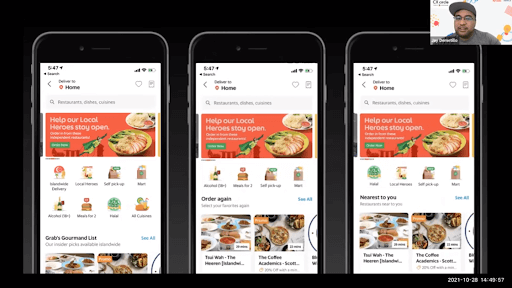
For Singapore (far left):
For Indonesia (far right):
The constant effort to improve their UX has certainly helped the superapp’s growth, placing GrabFood as Southeast Asia’s #1 most used food delivery platform* with a steady 10% increase in their user base every month.
*According to research by Kantar on consumers claiming their most-often used app-based food delivery platform brand in 6 SEA countries (SG, MY, TH, VN, ID, PH).
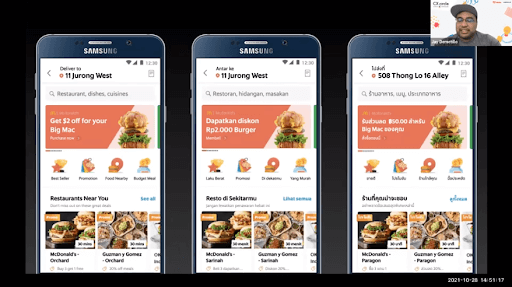
When designing for content, it’s vital to ensure design systems are scalable to languages other than English. Jay recommends speaking to your on-the-ground operations team to determine character counts and collaborating with content specialists to understand local lingo.
During one of their user research sessions, some participants raised their concerns with the robotic-sounding language on GrabFood’s previous interface and guided the team on how to change it to suit their local lingo. With real insights from real individuals, the application was developed to be more inclusive to the users and their culture.

As Jay noted earlier, it’s important to consider that the majority of Southeast Asia possess older Android phones and are dependent on Wi-Fi and unstable connections. Having loading skeleton screens to show progression in the app shows mindfulness of cultural differences that are commonly overlooked.
“We’re all different, in different ways. We are not just one identity, we’re multiple identities especially in Southeast Asia. For the rest of the world, ask yourself: how do you make sure you don’t come in with assumptions and unpack the privileges and biases you may have? Really consider minor details when designing and scaling for different markets.”
For more on Grab’s approach to inclusive UX design, you can catch the full talk here.
